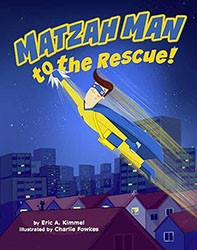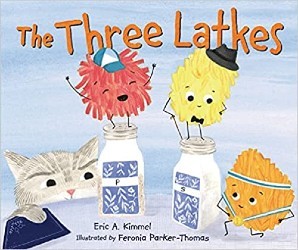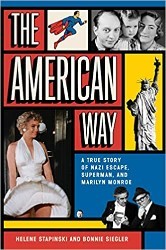Children’s books about the historical and religious origins of Hanukkah often emphasize the heroism of the Maccabees. In 167 B.C.E., these Judean freedom fighters were committed to opposing the repressive Greek regime. The joyous winter holiday of Hanukkah celebrates both the military victory and the miraculous small jar of oil found in the desecrated Temple, which allowed the menorah lights to last for eight days.
Eric Kimmel and Dov Smiley have chosen a more nuanced approach in their new graphic novel, emphasizing the validity of both Jewish and Greek culture and the tragedy of war for both peoples. The Jewish rebels are still brave defenders of their right to religious freedom and national self-determination, but the novel also depicts the terrible price of intolerance. The close friendship of Jason, a Greek boy, and Jonathan, a Jewish boy, is the lens through which Kimmel and Smiley view this truth.
An ancient setting and a contemporary tone tell Jason and Jonathan’s story. Jews and Greeks appear ethnically different; Jonathan is olive-skinned, while Jason is improbably pale and blond. (The author takes some historical liberties, some of which are clarified in the book’s back matter.) While in reality, a young Jew would not have attended school with his Greek friend, thanks to a conveniently tolerant teacher, Jason is allowed to invite his friend to classes about the Socratic method and Homer’s Odyssey. Jonathan’s family warmly welcomes Jason to their Shabbat dinner and Purim celebration. The friends have many conversations about their competing belief systems, which are mutually respectful and preternaturally mature. (Jonathan: “But why do you need so many Gods?” Jason: “I think it’s because people have different needs at different times”). Not every moment of their time together involves philosophy; there is also plenty of discus throwing and fishing.
Then, a change of leadership threatens the relative coexistence in their Hellenistic kingdom. Antiochus IV is presented as a wounded bully with an ugly and infantile personality. Angered by his recent military defeats, he blames the Jews and reverses previous policies that had allowed them a degree of autonomy. The gentle tone of the narrative becomes full of tension and fear, as soldiers serving their tyrannical leader confront Jewish guerrilla fighters with uncompromising tactics. Kimmel is careful to preserve the idealism of the Maccabees while also showing the chaos of war, as Jason and Jonathan become caught up in terrifying circumstances beyond their control. Smiley’s familiar comic book images of boyhood friendship convertto darker scenes pf hatred and combat.
In his author’s note, Kimmel explains both the historical background of multicultural Judea and his own idealism in giving young readers a hopeful story of two courageous individuals who embody the best of their own traditions. Jason and Jonathan’s quest can be as much a part of Hanukkah tradition as Jewish victory over Greek despots and their collaborators.
Emily Schneider writes about literature, feminism, and culture for Tablet, The Forward, The Horn Book, and other publications, and writes about children’s books on her blog. She has a Ph.D. in Romance Languages and Literatures.





